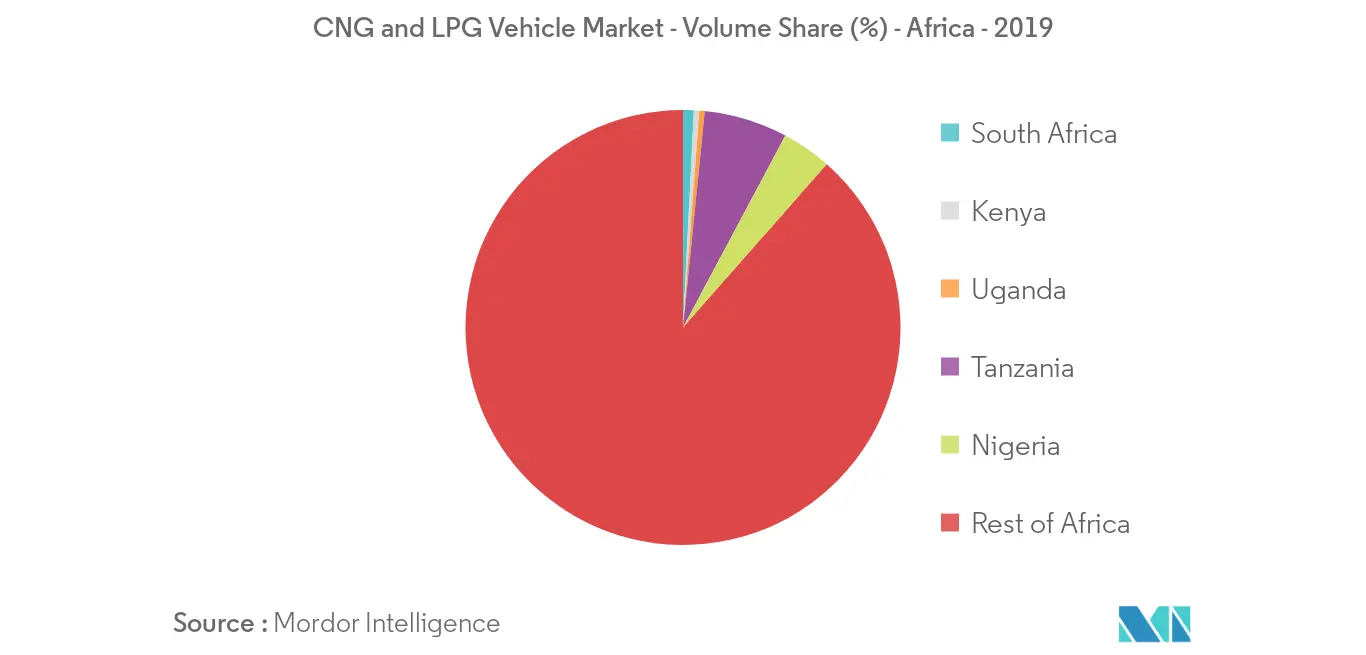Market Trends of MEA And India CNG and LPG Vehicle Industry
This section covers the major market trends shaping the MEA & India CNG and LPG Vehicle Market according to our research experts:
Environmental And Cost Benefits Associated With Natural Gas Vehicles
Government measures across the world to reduce the environmental impact of road traffic have been a significant push for the adoption of cleaner vehicles since the past few decades. Legislations to improve fuel efficiency (and reduce CO2) and to limit atmospheric pollution have been put into effect by a number of countries and cities.
Earlier, the main emphasis for fuel efficiency measures has been for smaller vehicles. But now commercial vehicles and heavy goods vehicles are also being subject to such structures, which has seen the penetration of LPG and CNG into these class of vehicles. In a recent study conducted in 2019 by the Sustainable Gas Institute, emissions from natural gas fueled trucks were noticed to be 15% lower than those of diesel trucks. But the volume for these commercial vehicles is still considerably less, at around 1% of the total global volume of natural gas vehicles (NGVs).
Though new NGVs are costlier than their petrol (and sometimes diesel) counterparts, this initial trade-off is nullified in the medium- to long-term period post purchasing the vehicle, as there is considerable price difference between vehicles that run on gas and those that run on petrol and diesel.
The International Energy Agency (IEA) quotes a payback period of anywhere between two to four years in regions where there is a significant difference in fuel prices. Also, the cost of setting up refueling infrastructure is subsidized in some countries, which will result in more gas stations emerging, and in-turn, will lead to more people preferring to buy or use NGVs. This will further result in high-volume usage of NGVs, which will be in-line with legislations to improve environmental conditions.
The technology of natural gas engine development and conversion of engines to be fueled by natural gas is well established, and suitable equipment is readily available in the after-market. In quite a few parts across the world, people who initially buy petrol vehicles later get them converted to bi-fuel engines and have their vehicles run on both fuels based on necessity.
Automakers have identified this as an attractive proposition and are introducing vehicles that come factory fitted with NGV equipment. Customers are also preferring this type of set-up as the new-vehicle is covered under warranty and can be serviced in authorized centers.
The market comprising of various manufacturers offer natural-gas engines, either as dedicated (mono-fuel) otto-cycle engines or as duel fuel diesel-cycle engines. Companies, such as Volvo, Scania, and Iveco have all introduced new gas commercial vehicles.
In India, Maruti Suzuki, the country's largest vehicle manufacturer, has CNG option available for 8 of its models, which include both passenger cars and light commercial vehicles. Three-wheeler CNGs have also become very popular in the country over the years and are offered by manufacturers, like Bajaj, Mahindra, Piaggio, etc.
Also, in some cases, NGVs have lower maintenance cost as compared to conventional ICE vehicles. For instance, a 12-month comprehensive study between CNG and diesel transit buses revealed that gas fueled buses are cheaper to maintain by 12% in comparison to diesel ones.
All the aforementioned factors are expected to drive the market for NGVs over the forecast period.

Tanzania Expected to be the Major Market in Africa
Tanzania has considerable reserves of natural gas, due to which, it does not need to import from neighboring countries, unlike the case with petroleum.
To capitalize on its reserves, the government, since the past few years, has been actively investing to bring natural gas vehicles on road. Earlier, the government invested nearly USD 65 million to start a project to supply nearly 30,000 households with CNG and power 8,000 cars in the city of Dar es Salaam.
Though it costs around USD 1,000 to USD 1,500 for converting a vehicle in the country into a gas-fueled one, many Tanzanian motorists are embracing this more efficient, cheaper, and cleaner transition.
To further support this transition, in July 2019, the Tanzania Petroleum Development Corporation (TPDC) issued an Expression of Interest for investments toward the construction of compressed natural gas (CNG) refueling stations to supply for vehicles.
The TPDC also took-up a project in 2018 to convert at least 800 buses to natural gas so as to cut fuel use by almost 50%. Also, few Uber and Taxify drivers are also planning to convert their vehicles. In lieu of all these developments, the market is expected to grow at a considerable pace over the forecast period.

